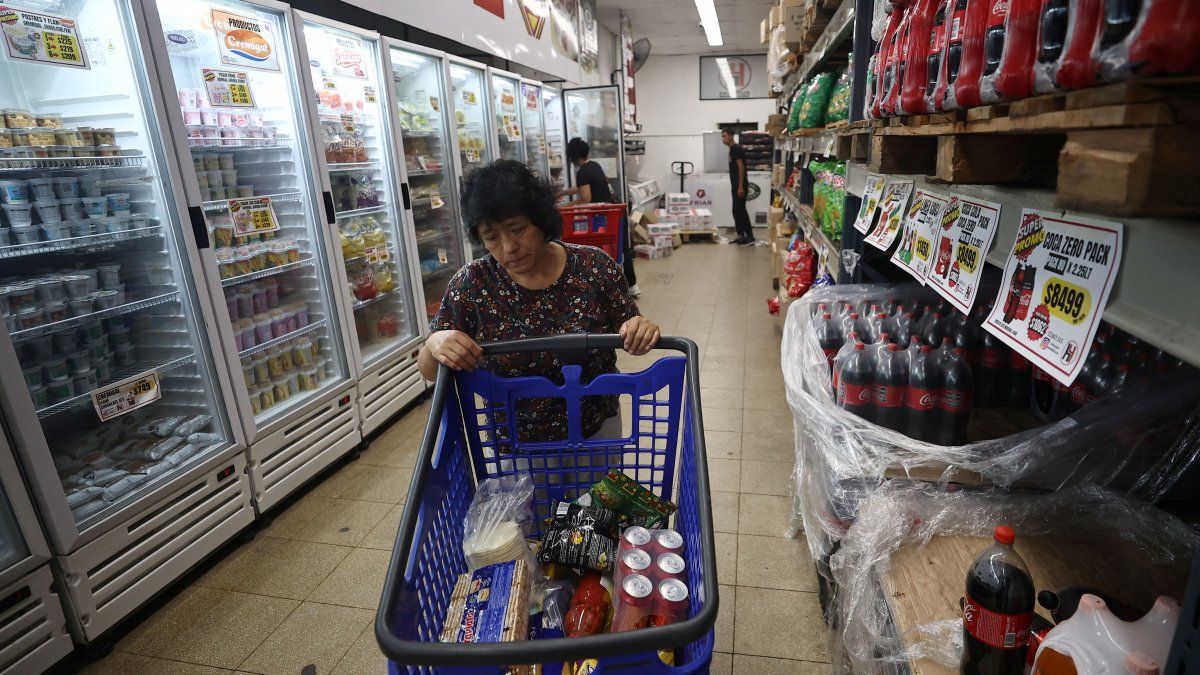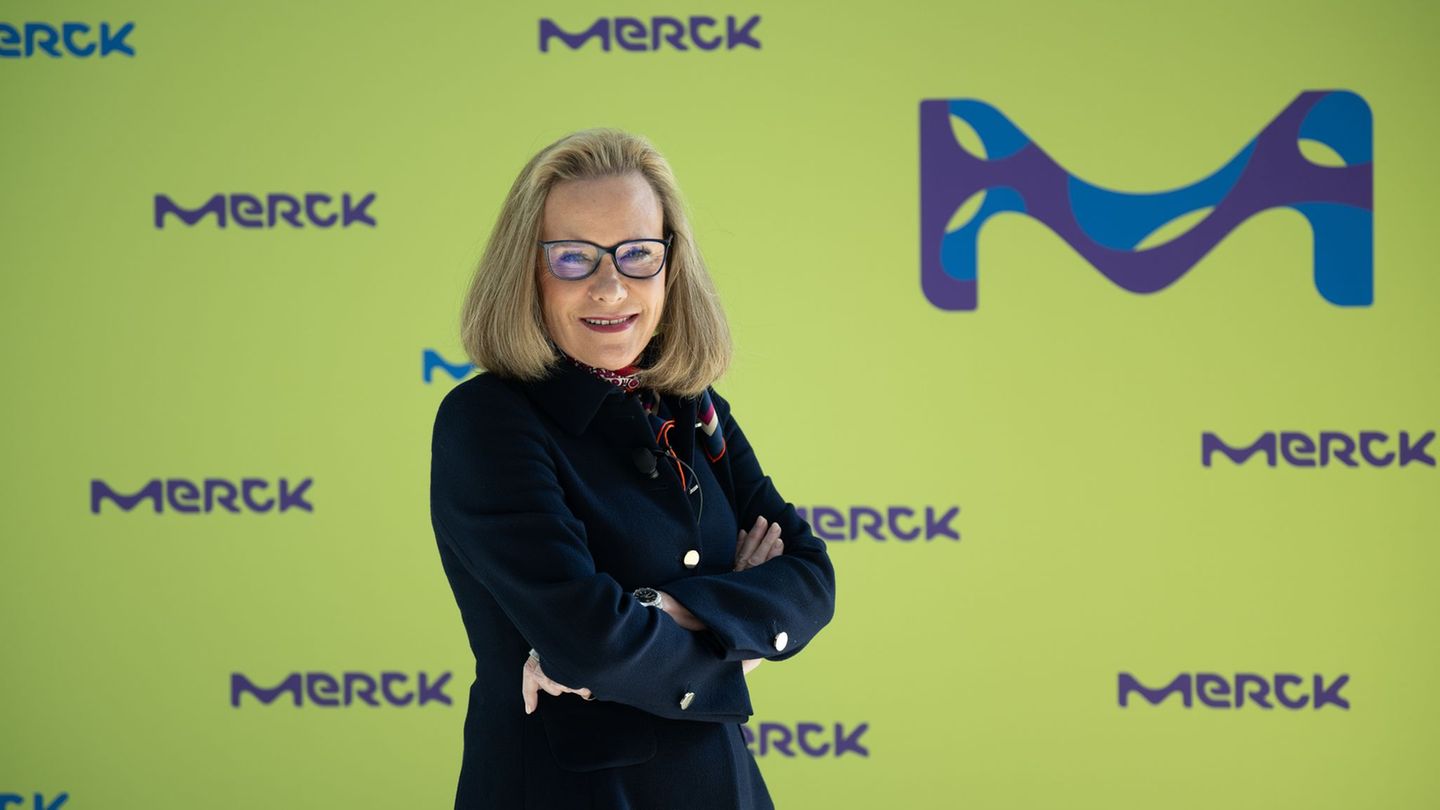Another point on which he placed special emphasis was on “lowering inflation, which is the priority to be able to stabilize the economy, and thus begin a cycle of growth that allows the reduction of taxes” and he reconfirmed that the country will not change its economic course, beyond the political ups and downs.
inflation-prices-supermarkets-food
Reuters
The Government has been raising disagreement with the strong increases that are displayed on the shelves in the form of coverage due to the fear of a more complicated outlook and the role of discounts or bonuses as a mechanism to mitigate the impact of the increase.
Given this, they considered that the real price of the products should prevail when marketing them.
“It happened to many companies that they “priced” their products expecting a catastrophe scenario that did not materialize. Today they have very high list prices that people do not validate for the most part, and they have already begun to lower them, but through promotions, such as ‘ 60% discount on the second unit` or up to `2×1`”Caputo noted.
President Javier Milei spoke in the same vein, pointing out in a television interview that “companies raised prices very sharply and now they are correcting with 3×2 or 2×1.”
inflation-prices-supermarkets-food

Reuters
“Then the (list) price is marked when in reality it is going down,” said the national leader, while considering that “if it corrects for this effect, inflation is in single digits.”
For now, while the issue is under debate, this Tuesday the official cost of living for February, measured by the INDEC, will be known.
A Buenos Aires family already needs more than a million pesos to be considered middle class
The CPI for the city of Buenos Aires was 14.1 percent and analysts, like the Government, estimate a number around 15 percent, cutting another five percentage points for the second consecutive month.
The cost of living continues to become more expensive hand in hand with the level of inflation and after the 14.1% reported by the Buenos Aires Statistical Directorate and the month-by-month measurements through poverty lines and consumer baskets, more than one million pesos of income to be classified as the classic middle class in the City of Buenos Aires.
The exact number for a typical family of two adults and two minors was $1,017,520.79 for February.
A very important clarification is that this value is reached assuming a household in which the family owns the home.
Therefore, the number for the thousands of families that rent in the City of Buenos Aires is significantly higher.
Last month, a typical family in the City of Buenos Aires needed to earn an income of at least $1,017,520.79 to be considered middle class and $814,017 to not fall below the poverty line. Meanwhile, in order not to be indigent, at least $419,844 per month was necessary.
The calculations are based on the evolution of poverty and indigence lines. During February, the indigence line corresponding to the Basic Food Basket was $402,752, an increase of 14.89% over January (in line with the inflation index) and 310.2% year-on-year, here there is an obvious difference with the interannual inflation that reached 264.5%. Inflation hit the homeless 45 percentage points higher than the general population.
The poverty basket rose in price from January to February by $52,190 pesos, about 1,800 pesos per day during the 29 days of February. In the case of the poverty line, the month-on-month increase in pesos was $94,073.
Regarding the poverty line, the Total Basic Basket for February was $684,115. Almost 16% more than in January of this year and 290.7% in the interannual variation. Again significantly above the general inflation of the period.
Socioeconomic level according to income
The stratification in which the report of the Buenos Aires statistical entity is organized allows, as explained, to identify the most unprotected sectors of society in terms of situations of indigence and poverty and, on the other hand, to account for the heterogeneity of the non-poor sectors in order to facilitate a more comprehensive analysis of the social situation of the City, measuring the evolution over time of each of the defined strata. Namely:
In a situation of indigence: Households whose total monthly income is not enough to cover the Basic Food Basket (CBA – Indigence Line). During December, those who received income less than $402,752.23 belonged to this range.
In a situation of non-indigent poverty: Households whose total monthly income is not enough to cover the Total Basic Basket (CBT – Poverty Line) but allows them to at least acquire the CBA. In this situation are those who receive income between $402,752.24 and $684,115.30
Vulnerable non-poor: Households whose total monthly income is at least the CBT and does not reach the Total Basket (TC) of the Consumption Basket System. The range of families with income between $684,115.31 and $814,016.62.
Fragile middle sector: Households whose total monthly income is at least the CT and does not reach 1.25 times the CT of the Consumer Basket System. Income between $814,016.63 and $1,017,520.78
Middle sector “middle class”: Households whose total monthly income is at least 1.25 times the TC and does not reach 4 times the TC of the Consumer Basket System. Receiving income ranging from $1,017,520.79 to $3,256,066.51.
Affluent sector: Households whose monthly income is 4 times or more than the TC of the Consumer Basket System. From $3,256,066.52 onwards.
Source: Ambito




